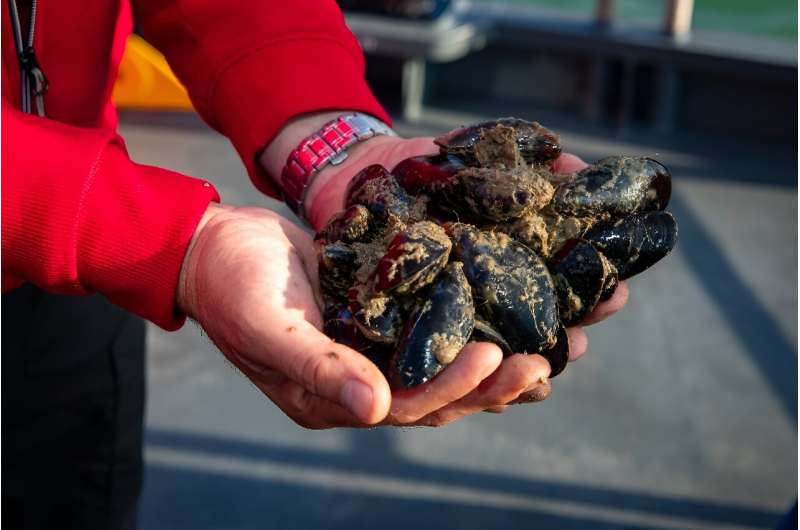This article has been reviewed according to Science X's editorial process and policies. Editors have highlighted the following attributes while ensuring the content's credibility:
fact-checked
reputable news agency
proofread
Mussel beach: Belgium's recipe to fight erosion

Belgian mussels have long satisfied hungry diners, but an experiment is now underway to see if they can also protect Belgium's North Sea coast.
The recipe no longer involves white wine broth and a bowl of salty fries, but an undersea reef barrier diverting currents from the sandy coastline.
Six years ago, two Flemish scientific institutes joined forces with mussel growers in an experiment off the beach resort of La Panne.
The biologists have now revealed promising results and hope to attract government funding to develop reefs on a larger scale along the 40-kilometer (24-mile) shore.
The idea would be to string cables along the drop off between the shallow coastal waters and the North Sea, on which naturally spreading shellfish can make their home.
Powerful currents churn the sand in this intermediate area, but clusters of mussels growing on vertical cords can disrupt their force as they start to build a living barrier.
And when a bunch gets too heavy for the artificial structure, they fall in clumps to the sea bed, spreading a new natural ecosystem that will provide long-term protection.
"A habitat for all sorts of living creatures develops around the mussels," explained Alexia Semeraro, a researcher at the ILVO institute for agriculture and fishing.
Extreme storms
A "biogenic reef" will stabilize sediments that had been suspended in the churning waters, limiting erosion as well as providing a more biodiverse habitat.
"Against severe storms, which may occur more often with climate change, we need to have a portfolio of solutions," says Tomas Sterckx, of Belgian multinational DEME.
DEME, which offers environmental remediation, dredging and offshore construction, is now helping scientists build "underwater biological protection lines".
The reefs will not replace the work of filling in Belgium's beaches with shipments of sand, but could help dampen the extreme storm surges fueled by climate change.
"We want to restore the entire ecosystem, it's the entire ecosystem that needs to be helped to be able to withstand extreme storms," Sterckx said.
"The biogenic reefs are a tool to add to the coastal ecosystem... a first line of defense."
Off La Panne, a popular resort and beauty spot backed by dunes near the French border, the buoys and supports that held the web of cables in place since 2017 have come down.
The hope is that the reef below will remain as a foundation for nature to defend the shore, classified as a natural reserve.
And in Ostend, marine biologists are working on new plans to deploy seaweed, sea grass and sandworms in new natural buffer zones to further reinforce the area.
© 2023 AFP




















